The importance of preparation and training for journalists is ever more relevant.
What advice can you offer to journalists who are, for the most part, freelancers and don’t have the level of support larger networks provide when a story is so important, yet the risks are equally so high? Freelance journalists are in need of safety training more than ever before as kidnappings and death tolls continue to rise across many areas of conflict around the world.
72 Hours Under Fire
As I write, it is 12 months to the day since I went with a small team of journalists – CNN reporter Arwa Damon and cameraman Neil Hallsworth – into the besieged Syrian city of Homs and spent three days inside Baba Amr to witness the devastation, first hand. At that point, the Assad regime has used brutal force to try and put down a popular uprising in Syria for over a year. What started out with peaceful demonstrations has turned into a bloody conflict between loyalists and those who wish to oust the regime. To date, after more than two years of fighting, the UN estimates that more than 70,000 people have lost their lives, and the death toll is rising.
Bombarded daily, with supplies running out, moving short distances sometimes measured only by a few city blocks, to conduct an interview or to film the wreckage from the latest salvo of rockets was an intense challenge, under the constant threat of regime snipers. News teams working in conflict zones and Special Forces share some things in common, they are often unsupported, working far behind “enemy lines” with the primary role being to report back information. That is where the similarities end. Our team was made up of experienced individuals that had worked in a variety of countries and high-risk situations, all of which was called upon to keep ourselves safe when operating in Homs.
After three days, we made the decision to leave, primarily because we received information that the government forces surrounding us were planning to advance in to Homs and crush the resistance offered by the few Free Syrian Army forces remaining. The CNN documentary traces these 72 hours and provides a unique insight into a bad situation that has since only gotten worse.
When we arrived safely back in Beirut, not more than 24 hours after leaving Syria, we were greeted with very tragic and sobering news that veteran reporter Marie Colvin and French journalist Remi Ochlik had been killed and others with them severely injured when a mortar shell hit the same house we’d shared during our time in Homs.
Towards the Danger
Having worked with journalists for the best part of the last 11 years, often alongside them in high-risk situations, I have learned almost as much as I’ve taught about journalism safety. Unlike most professions, newsgathering is different because when something bad happens, most sensible folks run away or seek safety. But journalists run towards the danger to pursue the story and get the images – something that, in a conflict situation, can’t be done from the safety of a bureau or hotel room miles from the frontlines.
From the beginning of the “Arab Spring” we have seen more freelancers and more wanna-be reporters or “citizen journalists” flock to the frontlines hoping to catch that “big break”, tell their story or experience what it means to be a “war correspondent”.
“Rookie” journalists are often not fully aware of the risks, nor do they have the necessary understanding of what it takes to operate safely before going into conflict zones or these intense situations. A freelance journalist is a person who pursues the story because he or she has a passion for the subject. They are often looking for their big break in the field where, in today’s media environment, it is getting more difficult to stand out. As a result, they are forced to face situations they’re unprepared for and ill equipped to handle.
Not long after returning to the US from Syria I decided to hold a training session (the first of many), primarily for freelance journalists as I felt the landscape and the needs had changed. Freelance journalists are more likely to be in harm’s way. I used the recent assignment in Syria as a focus for the training to highlight the subtle changes in the risks our team experienced as well as hearing from many more who had covered the “Arab Spring” uprisings.
The freelance media community is as large and diverse as any and, when it comes to conflict zones, their interests often overlap with human rights and humanitarian groups, all of which benefit from shared experience and training.
When we talk about safety, most of the principles we discuss are universal and can be applied by anyone in any number of situations, not just in a war zone, but the remainder of what I have to say is an attempt to discuss some of the major changes in the risks and how the freelance journalist should consider implementing them when they head out to cover a dangerous assignment.
Planning
It goes without saying: the more time and effort devoted to planning a task the more likely the outcome will be successful. This is nothing new, perhaps, but more recently we have seen “newsworthy” events unfold or develop at a quicker pace than in the past, perhaps largely because of the technology available. The need for a journalist to react quickly to a breaking news story is not new in the business, but unless you happen to be in the area when the story breaks, you are going to have to get to the action quickly and you are unlikely to have sufficient time to plan.
When preparing for a potentially dangerous assignment time and resources are luxuries. Therefore, it is more important for the journalist to set some clear objectives before heading out. By planning the assignment as much as possible, you can hope minimize the risk, identify the possible dangers and have the flexibility to deal with just about any situation providing you maintain a degree of situational awareness, we need to know what is going on immediately around us and what could effect our wellbeing, to do that we have to be disciplined. In order to be successful in keeping oneself alive we have to act on information, assess whether something, good or bad, is going affect us and then do something. Without discipline it is easy to become paralyzed by evolving events and get caught out.
During our time in Baba Amr, the building we were staying in was hit by a rocket, blowing a four-foot wide hole in the wall between the second and third story, the same room we had been offered the day we arrived. Apart from the obvious damage to the room and structure, the explosion also knocked the power out. Why is this important in the context of planning? First of all, we went into Homs with some very clear objectives – stay up to a week and focus on three to five main stories. This, along with a quick appraisal of the situation, meant we would be safer staying on the ground floor working and living with our hosts tucked into a corner close to a power supply, meaning we could keep all our vital work and safety equipment charged and remain better protected from the daily barrage of rockets and shells above.
Preparation
Planning and preparation go together, but when you are a journalist who covers hostile assignments, the reality is the only predictable thing you can expect when covering conflict is that a dangerous event will occur and often at the most inconvenient time. When it happens, even the best made plans can fall apart so your preparation then becomes more important.
Before undertaking a high-risk assignment, you want to ensure you are both physically and mentally prepared. Heading out with any type of physical condition is asking for trouble. The stress of operating in a war zone increases the condition will likely worsen or will have an impact on your ability to respond when it really matters.
Training is by far the best way to prepare, physically and mentally but, more importantly, to equip you with the skills and knowledge to work safely. No matter how much field experience you may have, you will still benefit from time spent with others comparing notes, discussing experiences and learning from near-miss incidents. Also, certain “perishable” skills, such as techniques to open someone’s airway or control severe bleeding if not practiced will soon be lost or become ineffective.
The right type of training on “how to avoid trouble” and “what to do if you get into trouble” or developing “situational awareness” along with an appropriate amount of contingency planning not only prepares the freelance journalist for work in a hostile environment but also provides him or her with a healthy amount of confidence, allowing them to focus on the reason for going there – to report the story.
The two journalists that I accompanied into Syria both had gone through the same training I had delivered to over 600 of their colleagues, and even though we only had 24 hours together before we started the journey into Syria, we all had an understanding of the risks and how we were going to deal with them throughout the assignment. It is doubtful we’d have had this level of comfort going into the trip if we didn’t share the same level of training or experiences.
Communications
Being able to communicate with the outside world when working overseas is essential, not just for safety but also for work purposes. Letting someone know where you are and what you’re doing is important. But without the ability to send in stories or report the news it makes it difficult to get paid. If there are reliable telephone and Internet connections it’s relatively easy but not always safe, depending on where you are and who might be listening in. If you’re working away from connectivity, reliance on modern satellite technology is a critical tool for journalists in conflict zones.
Last year, when we entered the Syrian city of Homs, which had effectively been cut off by the Syrian government authorities seeking to quash news coverage, we had to rely on the use of satellite technology to file reports and communicate with the outside world. This itself was a challenge. Technical issues, signal interference and logistical complications of switching transmission locations became difficult, nor did we have a clear line of sight to the satellite without exposing ourselves to the constant pounding of rockets and artillery shells.
While satellite communication technology has made it easy to work remotely, it does come at a price: technical experts agree it is relatively easy to track and listen in to a satellite signal, even if the signal is encrypted. While an invaluable tool, there are a number of things to consider when using satellite communications: limit the amount of time transmitting from any one location, try not to transmit from the same location you are living or working from and remove the battery when not in use. All this needs to be balanced with being able to check in with those responsible for you.
So what if something does go wrong? Situations often arise where journalists are injured while caught in crossfire or if combatants in the region are targeting them. It’s important to know the basics on how to handle a variety of situations such as checkpoints, being detained or an incident requiring medical assistance. In most cases, lives can be saved with basic items you can carry in a small medical kit in your backpack. Keep it handy and know how to use it under pressure.
With the appropriate training, knowledge and preparation, freelance journalists will have more success not only in surviving a conflict zone or dangerous assignment, but also will become better at their job. They will be more focused and confident. Journalists who venture out without these things are at higher risk and more vulnerable to a negative outcome. While it’s important to acknowledge journalistic rights and freedoms in reporting, it’s just as important to provide them with the necessary support to allow them to do their job.
The views expressed in this article are the author's own and do not necessarily reflect Fair Observer’s editorial policy.
Image: Copyright © Shutterstock. All Rights Reserved.
Support Fair Observer
We rely on your support for our independence, diversity and quality.
For more than 10 years, Fair Observer has been free, fair and independent. No billionaire owns us, no advertisers control us. We are a reader-supported nonprofit. Unlike many other publications, we keep our content free for readers regardless of where they live or whether they can afford to pay. We have no paywalls and no ads.
In the post-truth era of fake news, echo chambers and filter bubbles, we publish a plurality of perspectives from around the world. Anyone can publish with us, but everyone goes through a rigorous editorial process. So, you get fact-checked, well-reasoned content instead of noise.
We publish 2,500+ voices from 90+ countries. We also conduct education and training programs
on subjects ranging from digital media and journalism to writing and critical thinking. This
doesn’t come cheap. Servers, editors, trainers and web developers cost
money.
Please consider supporting us on a regular basis as a recurring donor or a
sustaining member.
Will you support FO’s journalism?
We rely on your support for our independence, diversity and quality.



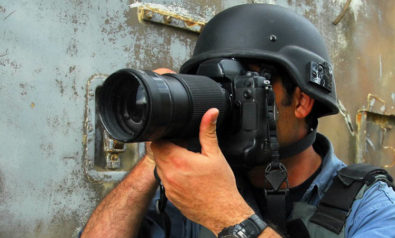

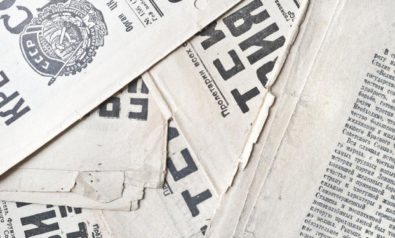






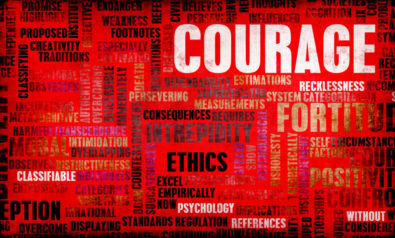
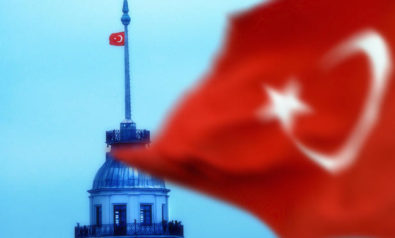
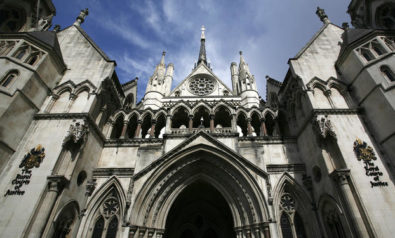

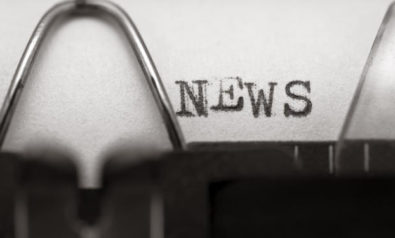

Comment